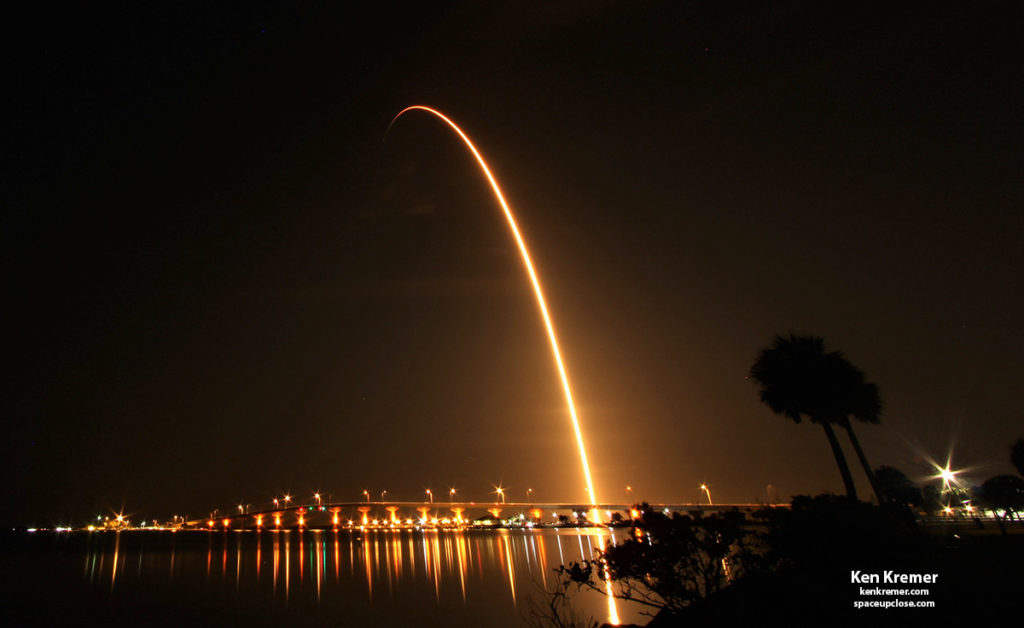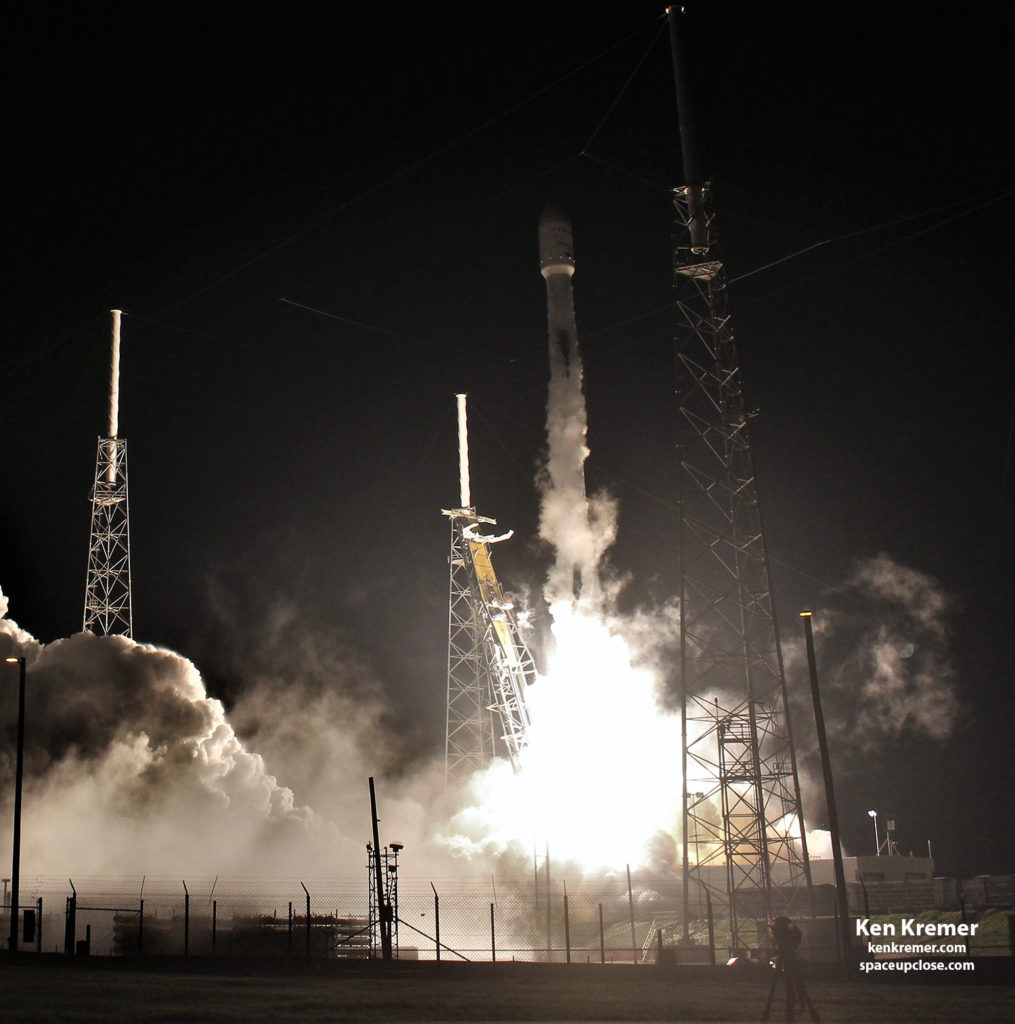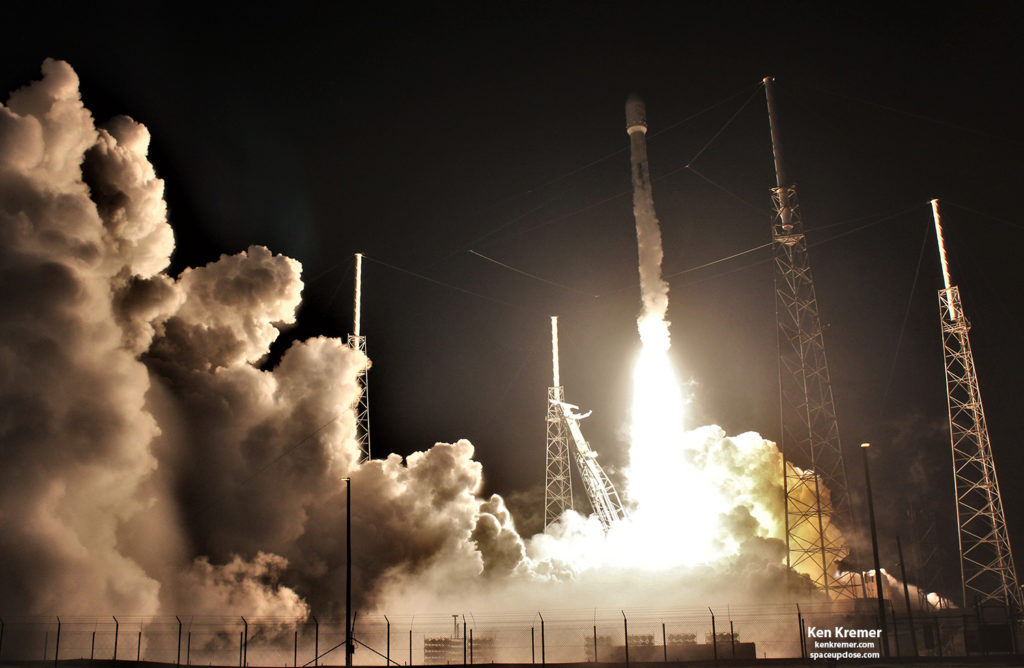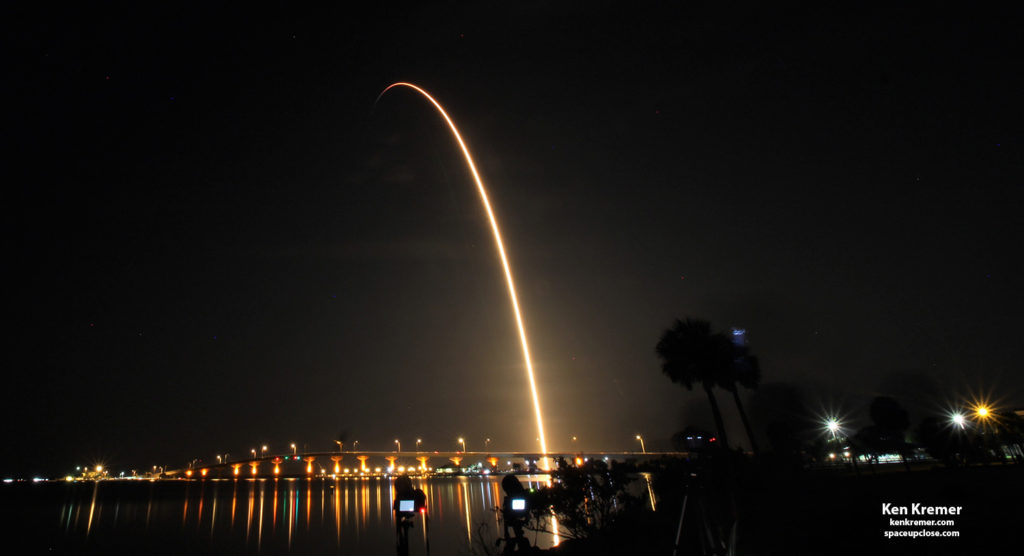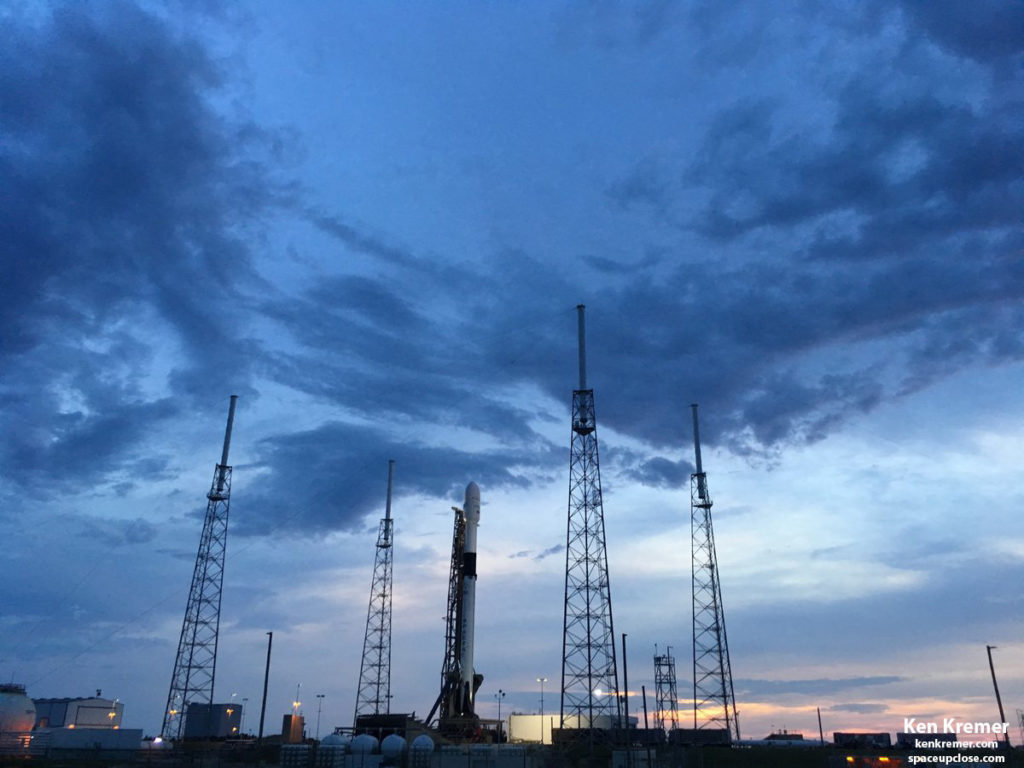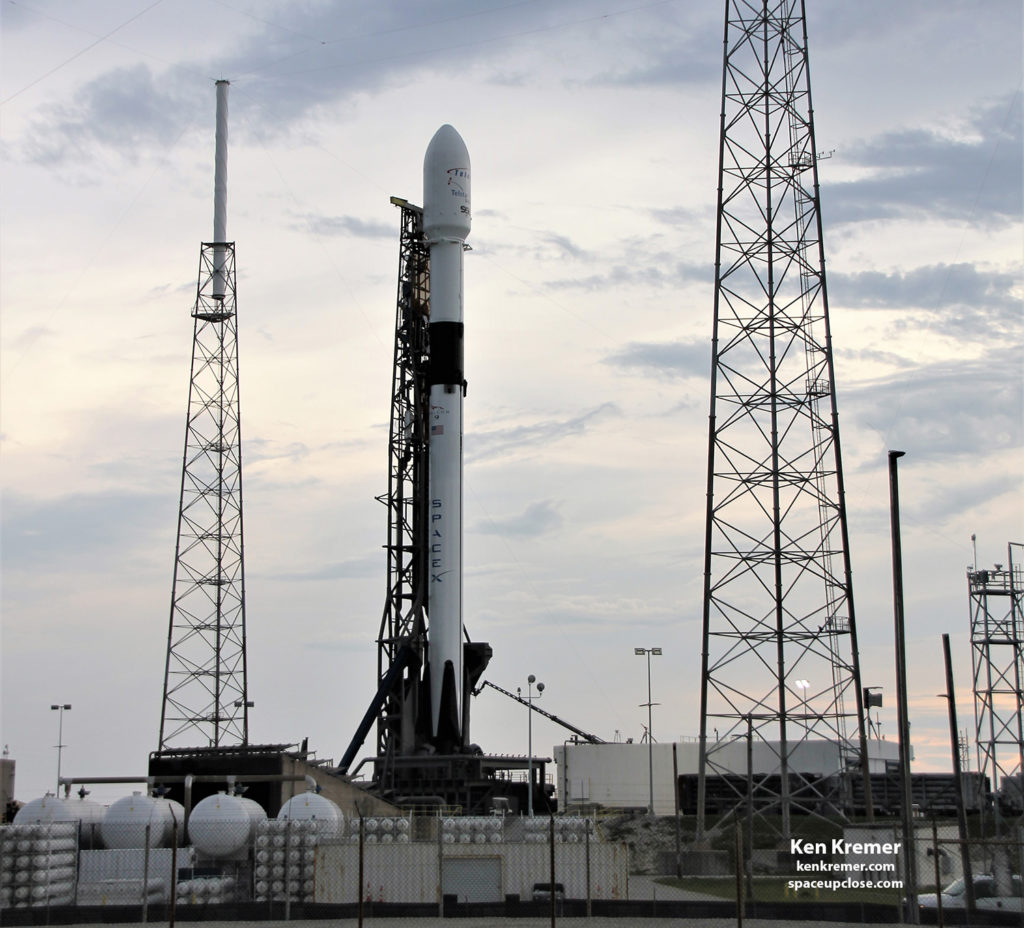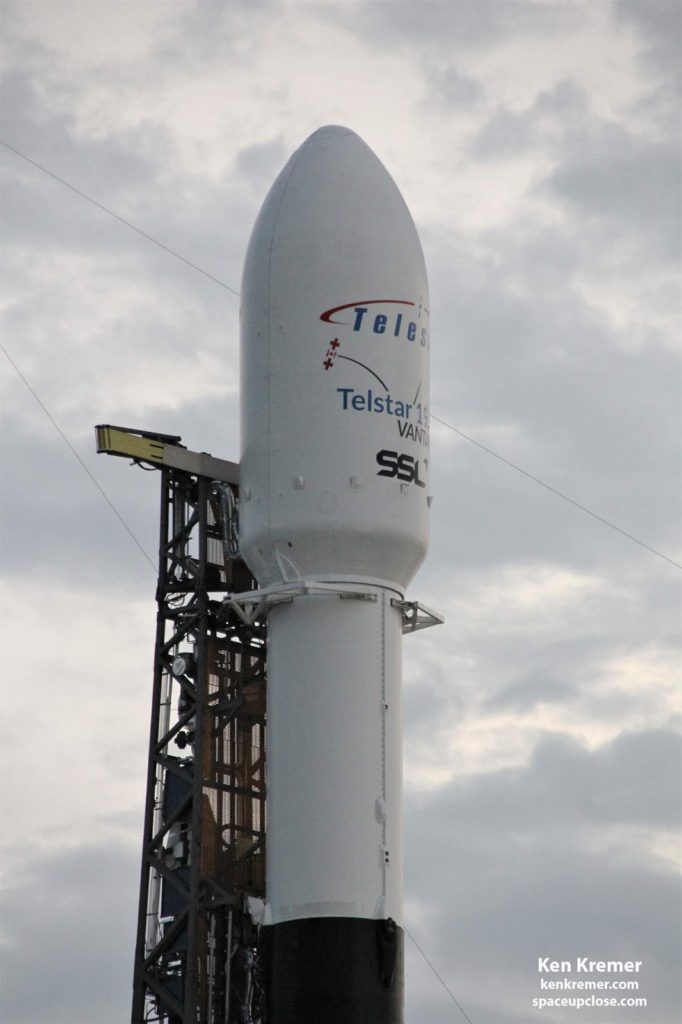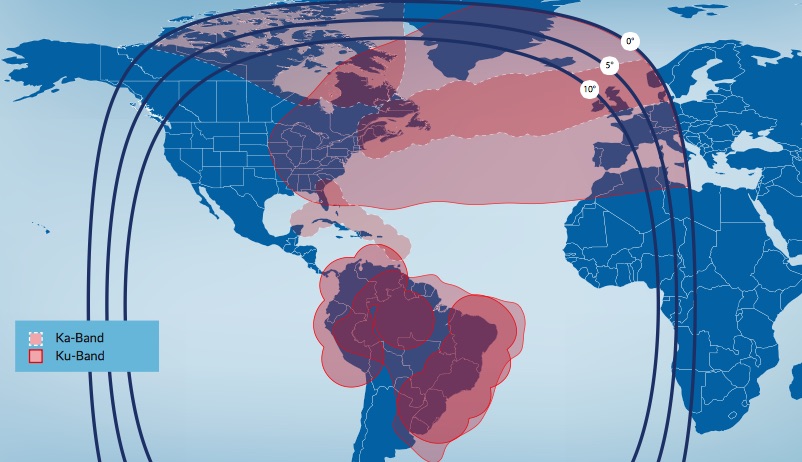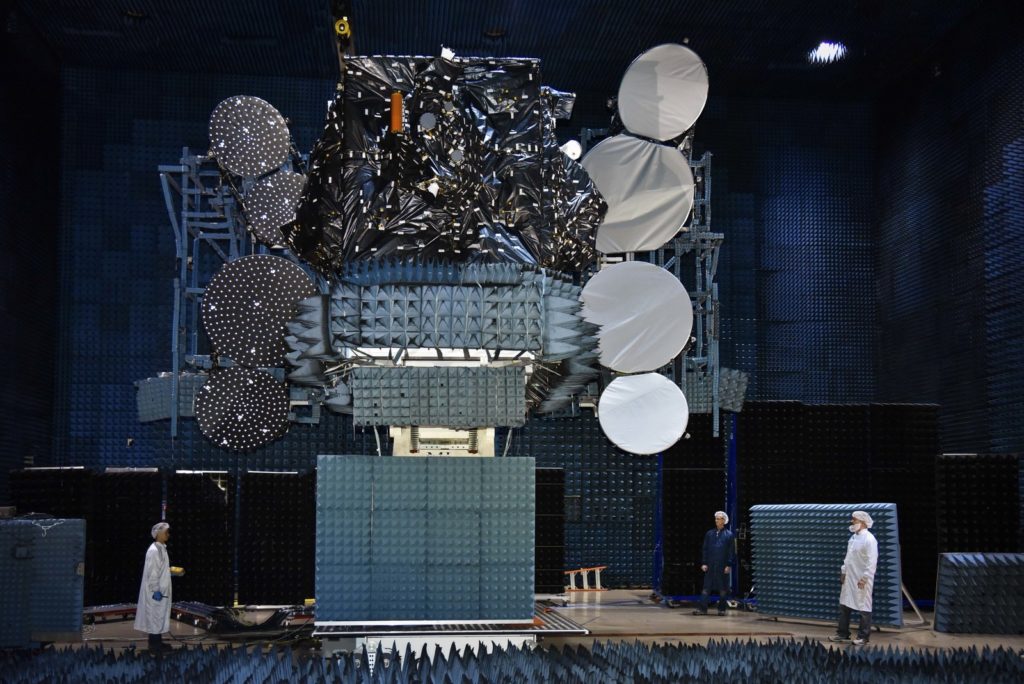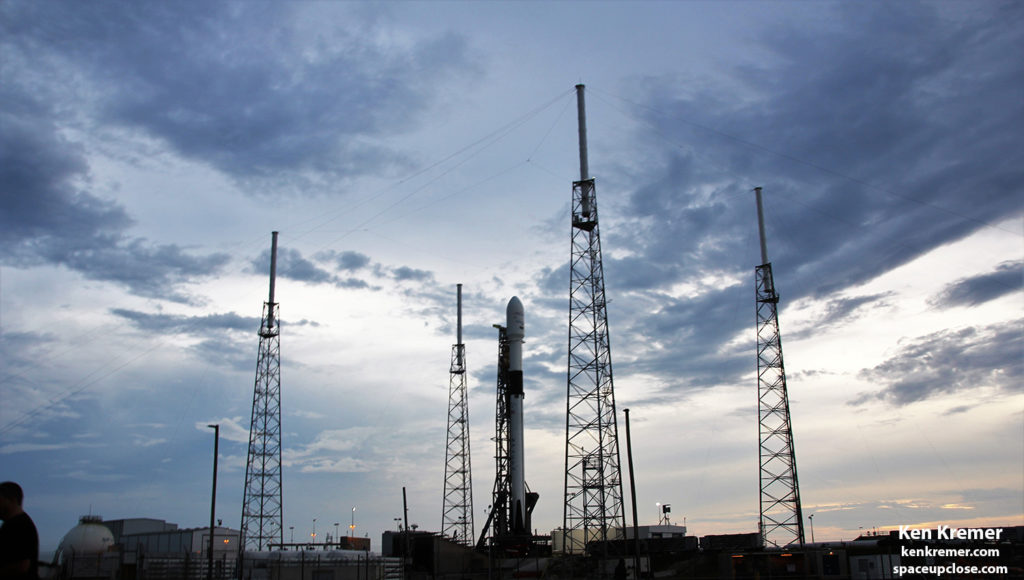— SpaceUpClose.com — 22 July 2018
– After drenching rain storms and strong
bolts of lightning repeatedly pelted the Florida Space Coast throughout the day
and early evening Saturday, a beefed up SpaceX Falcon 9 rocket blazed a beautiful
trail to orbit with a middle-of-the-night Sunday morning (July 22) blastoff of the
hefty Telstar 19v telecomsat for the Americas – squeezing in between a break in
the violent weather afflicting central Florida
all week.
The magnificent post-midnight liftoff of
the massive 7.8 ton Telstar 19 VANTAGE (or Telstar 19v) Canadian commercial telecommunications satellite atop the
upgraded Falcon 9 took place right at the opening of the lengthy launch window at
1:50 a.m. EDT (0550 GMT) Sunday, July 22 from seaside Space launch Complex-40 on Cape Canaveral Air
Force Station, FL.
Telstar 19 VANTAGE is reportedly the largest
and heaviest commercial communications satellite ever launched to geostationary
orbit some 22,000 miles (35,000 km) over the equator – weighing in at 7,080 kilograms (15,600 lb).
Telstar-owned satellite will deliver new high throughput Ku and Ka-band capacity
across the Americas and Atlantic.
verification from the SpaceX Launch Director.
The liquid oxygen
(LOX)/RP-1 fueled Falcon 9 first stage ignited with 1.8 million pounds of
liftoff thrust powered by nine Merlin 1D engine mounted in an octoweb arrangement.
The first and
second stages separated 2 minutes and 33 seconds after liftoff.
The second stage ignited for the first time at 2 minutes 24
seconds followed by payload fairing deployment at 3 minutes 40 seconds.
Just minutes later, the Falcon 9’s first
stage booster made a successful touchdown on the ocean going “Of Course I Still
Love You” drone ship platform
at sea – prepositioned some 400 miles (640 km) off shore in the Atlantic Ocean.
The Telstar 19v craft
successfully separated from the Falcon 9 upper stage as planned for deployment 33
minutes after liftoff.
All the mission action was
broadcast live on a SpaceX hosted webcast.
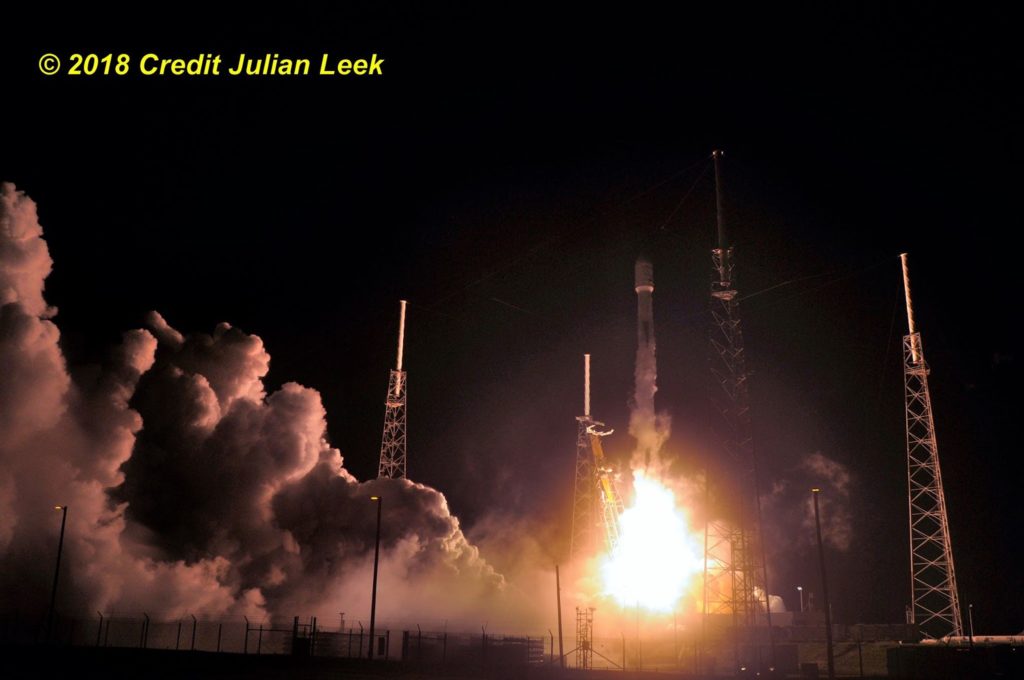 |
|
Launch
of SpaceX Falcon 9 with Telstar 19v on July 22, 2018 from Cape Canaveral, FL. Credit: Julian Leek |
space enthusiasts who traveled from near and far to witness the tremendous
sight – and packed area hotels.
I watched from nearby Titusville to capture a different eyewitness
perspective from my normal on base viewing
locations on the Kennedy Space Center Cape Canaveral Air Force Station – as my sound activated cameras
captured all the breathtaking action for Space UpClose directly at launch pad 40.
Telstar 19v as
the rocket blazed a picturesque trail over the Max Brewer Bridge.
The newly built two stage 229-foot tall (70-meter) SpaceX Falcon
9 rocket successfully delivered the Telstar 19 VANTAGE comsat to a
geostationary transfer orbit (GTO) for Telesat, one of the world’s leading commercial
satellite operators.
afternoon to pad 40 and raised vertical with Telstar 19 encapsulated inside the payload fairing and then inundated
with heavy rain squalls.
upgraded Block 5 version of their workhorse Falcon 9 rocket.
Launch Complex-39A with the Bangabandhu-1 comsat for the nation of Bangladesh.
satellite, designed as an advanced high
throughput satellite (HTS) providing broadband services.
covering both North and South America and
the Atlantic region.
Palo Alto, California, for Telesat, one of the world’s leading
satellite operators.
degrees West, the same as Telstars highly utilized 14R satellite.
raising boosts and in-orbit testing and checkout of spacecraft systems.
over a time span only about a month apart at the Cape. Telstar 18 VANTAGE is due to liftoff in the second half of August
from pad 40.
companies for many years and we are pleased to have collaborated with them on
our newest Telstar VANTAGE high throughput satellites,” said Dan Goldberg,
President and CEO of Telesat, in a prelaunch statement.
spacecraft are going to provide important competitive advantages for our
customers across the Americas and Asia. It’s great news that Telstar 19 VANTAGE
is now at the launch base and that Telstar 18 VANTAGE is nearly finished and in
the queue to ship.”
easier to turnaround with minimal maintenance, says SpaceX CEO Elon Musk. His
goal is to relaunch a recovered Block 5 a second time within 24 hours by
sometime next year.
the Falcon 9 booster which replaces the older, now discontinued Block 4.
Dragon CRS-15 resupply mission to the ISS.
was SpaceX’s 13th launch of the year.
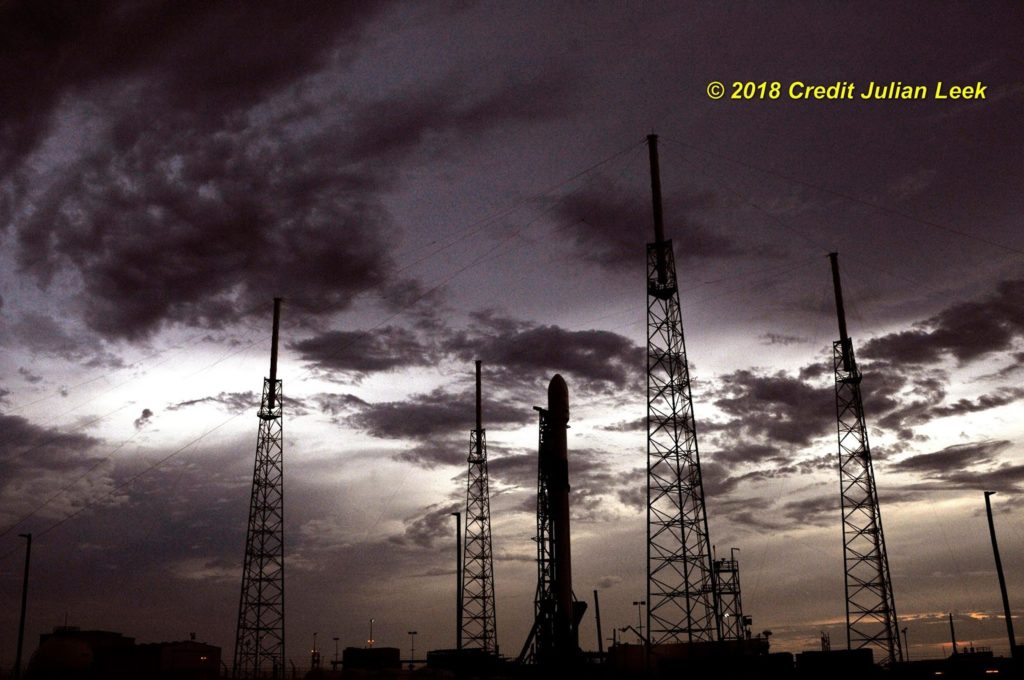 |
|
Prelaunch
sunset view of SpaceX Falcon 9 with Telstar 19v at pad 40 on Cape Canaveral, FL. Credit: Julian Leek |
next launch is set for Vandenberg AFB, CA at 7:39
a.m. EDT, 4:39 a.m. PDT (1139 GMT)
Wednesday, July 25 with 10 Iridium NEXT voice and data relay satellites.
next SpaceX launch from the Cape is set for August 2 at
1:19 a.m. EDT (0519 GMT) with the Merah Putih communications satellite for Telkom
Indonesia and also built by SSL.
Boeing, Lockheed Martin, Orbital ATK and more space and mission reports direct
from the Kennedy Space Center, Cape Canaveral Air Force Station, Florida and
Wallops Flight Facility, Virginia.
Stay tuned here for Ken’s continuing Earth and Planetary science and human
spaceflight news: www.kenkremer.com
–www.spaceupclose.com – twitter @ken_kremer – email: ken at kenkremer.com
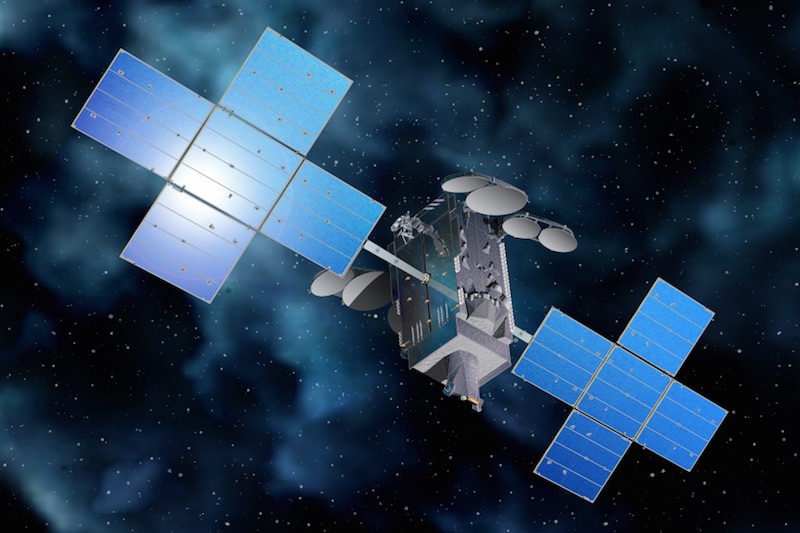 |
|
Artist’s concept of the Telstar 19
VANTAGE communications satellite. Credit: SSL |


